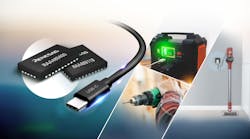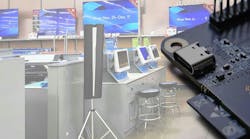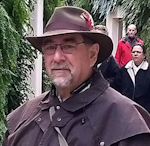USB EPR PD Solution Leverages Type-C Port Controller and Buck-Boost Battery Charger
The RAA489118 buck-boost battery charger and the RAA489400 USB Type-C port controller from Renesas Electronics combine to provide an Extended Power Range (EPR) USB Power Delivery (PD) solution.
The RAA489118 functions as either a battery charger supporting two to seven battery cells in series or as a voltage regulator supporting 30-V input and 30-V output. It employs the company’s patented R3 (Robust Ripple Regulator) technology, which combines the best features of fixed-frequency and hysteretic pulse-width-modulation (PWM) technologies. R3 modulation technology delivers acoustic noise-free operation, fast dynamic response, and best-in-class light-load efficiency for longer battery life.
The battery charger integrates an SMBus, commonly used in power tools, home appliances, and light industrial products, which allows it to work seamlessly with the RAA489400 and other components. Its input- and output-voltage levels also match mainstream solar-power voltage levels.
The RAA489400 port controller supports USB-PD VBUS power up to 48 V/5 A. It features an integrated PHY, both sink and source power-path gate drivers with external NFETs, short-circuit protection, VBUS discharge, a VCONN multiplexer, and dead battery support.
Key features of the Renesas USB EPR PD solution include:
- Battery charger supporting two to seven battery cells in series.
- Buck-boost voltage regulator supporting 30-V input and 30-V output.
- Advanced control scheme delivers fast transient response and system performance.
- Robust thermal management and protection features that guard against overcharging, overheating, and voltage anomalies.
- Adaptable configurations to support a wide range of applications.
- Bidirectional power flow.
- USB-IF certified reference design reduces compliance testing time and effort.
The RAA489118 comes in a 4- × 4-mm, 32-lead TQFN package, and the RAA489400 is housed in a 32-Ld 3- × 5-mm FCQFN. Comprehensive design support and tools, including configuration tools and battery-charger GUI software, are also available.





